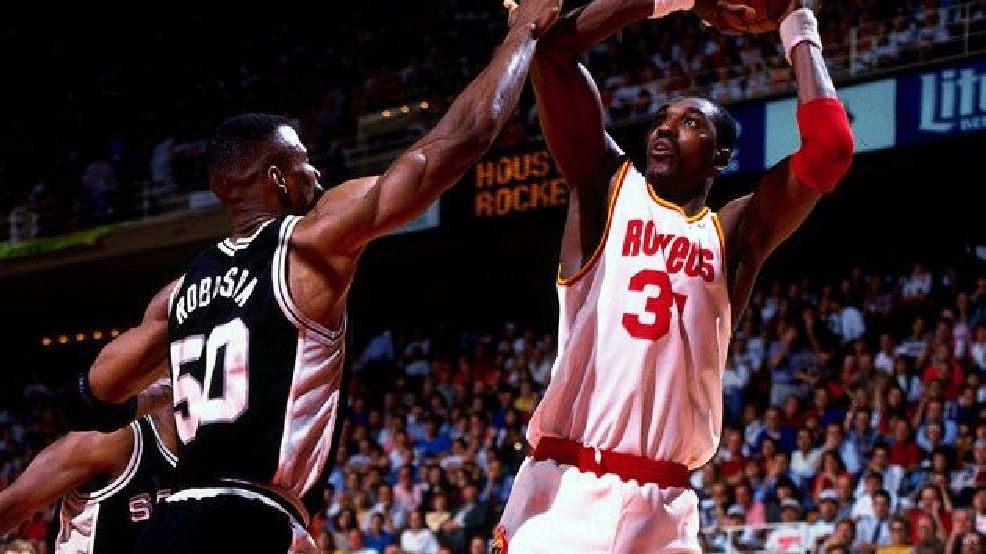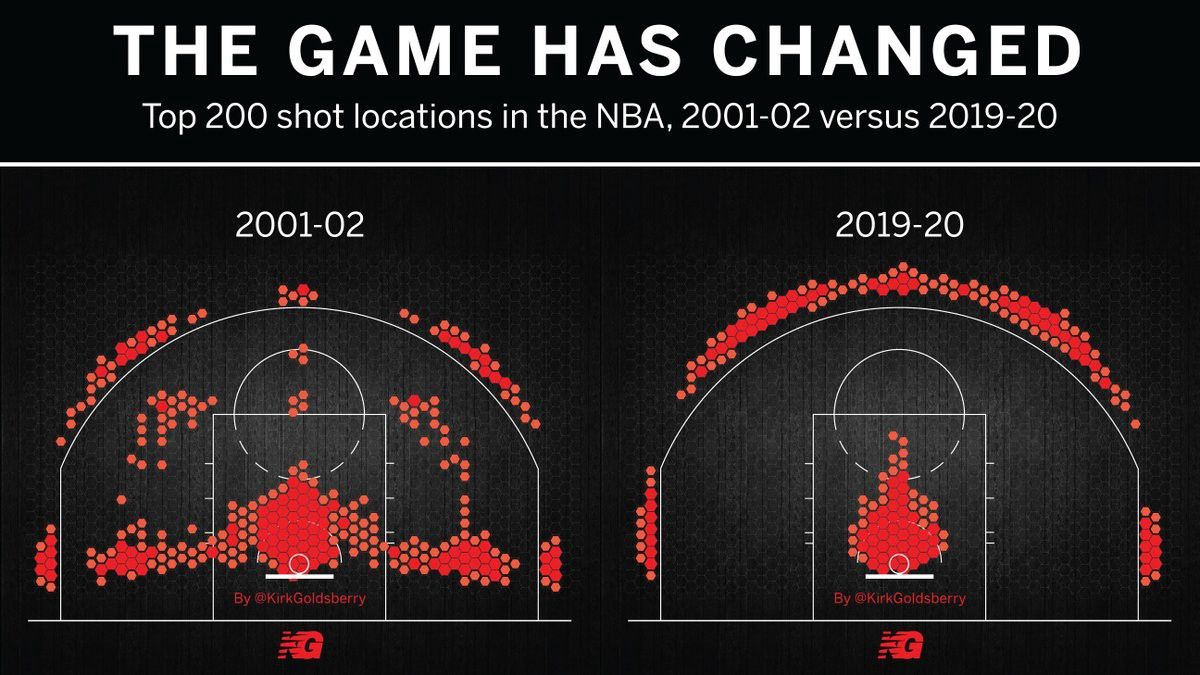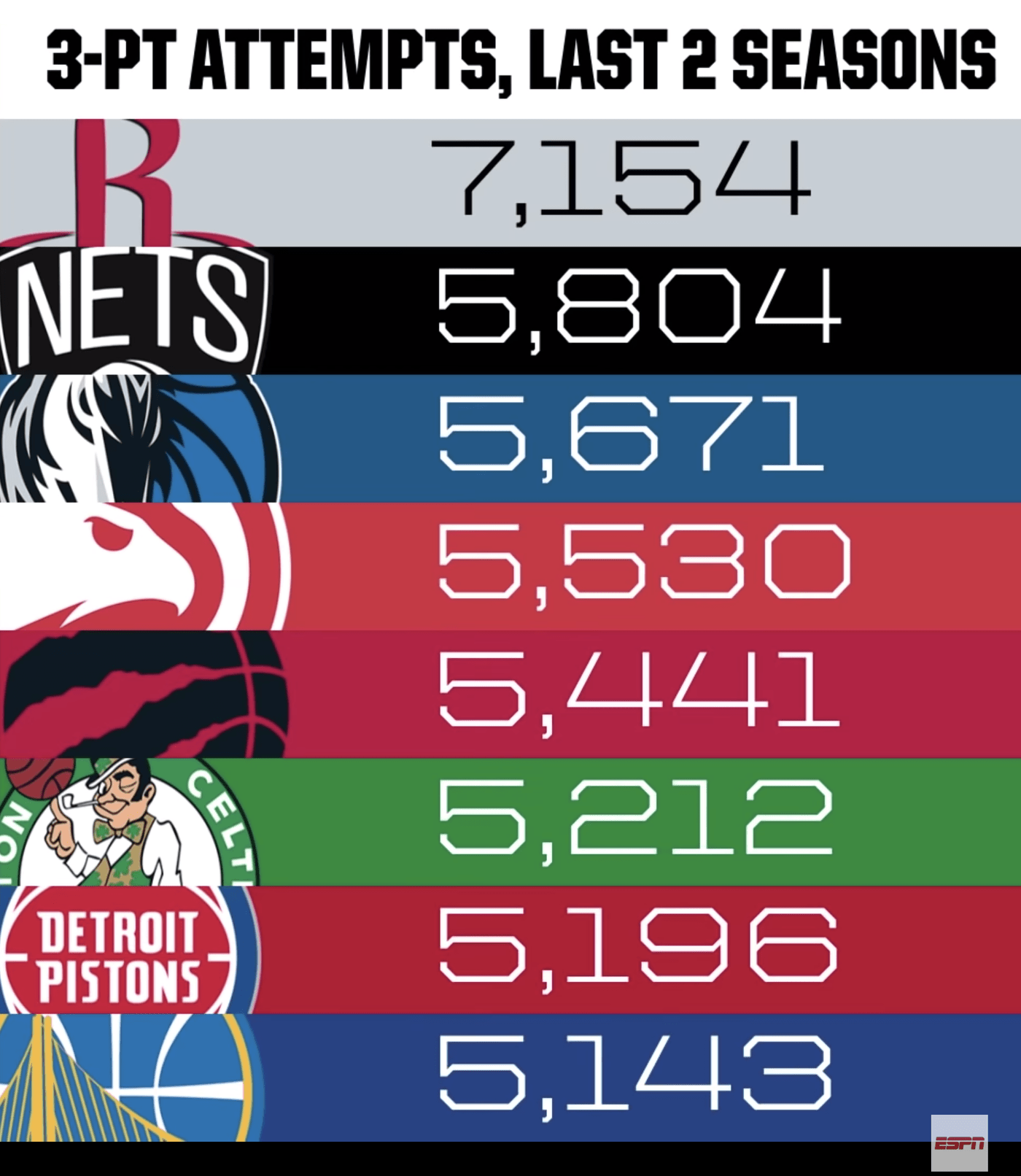Big Data Myths—The Rise and Fall and Positioning of NBA Leaders
ESPN has recently launched a series of videos about the rise and fall of NBA seniors, in which past and current star centers are asked to discuss the current positioning and value of NBA seniors.
From the "Four Heavenly Kings" in the 1990s to the new generation of projection centers, the positioning of long people has been seriously marginalized due to the popularity of three-pointers. The usefulness of a long man is no longer used for rebounding and defending the penalty area. Instead, outside shooting and perimeter switching have become the biggest criteria for judging the value of a long man. There is even a picture of defenders playing low-post singles in the penalty area more often than elders, completely erasing the center's past dominance.
But while basketball continues to be impacted by big data, the effects provided by centers may be overlooked but not to be underestimated.
The Myth of the Tripartite Effect

Since 1947, 32 top picks in the NBA have been centers, accounting for more than 50% of the draft history, and it also shows that centers once had a place on the battlefield. On the other hand, after 2010, most of the No. 1 picks were guards, with only Anthony Davis, Karl-Anthony Towns and Deandre Ayton left in the No. 1 center. Despite the limited data available since 2010, this trend still reflects the underappreciated and marginalized centers in the modern era.
In the era when "space basketball" is widely used, the team pays more and more attention to the use of three-pointers for space. When the players on the team have the ability to shoot three-pointers, the space that can be used on the court is also greatly extended. Why Curry or Lillard can take a logo shot so lethal. When a player is a threat to the half court, the team must extend the defensive attention to the entire half court.
Players with this three-point self-propelled ability are almost always guards or forwards, making the center a supporting role in this three-point show, leaving only the dirty work of pick-and-roll and rebounding. In addition, the league has paid more and more attention to "shooting fouls" in recent years, and it has also made outside shooters better and better at shooting. This situation also makes players realize that hitting the penalty area is no longer the only way to stand on the free throw line. Shooting from the outside to create physical contact is a more labor-saving and effective way to buy meals.
On offense, almost every team now uses the pick-and-roll tactically. But different from the previous thinking of helping the center create offensive opportunities, the current pick-and-roll is mainly based on the principle of helping the ball carrier to create dislocation, and single-playing the weakest point of the hostile defense. Often this means that the ball carrier will try to match up with the opposing center, resulting in a situation where the guard is playing the center alone on the perimeter. When defenders can no longer put their hands on the offensive players, it is even more difficult for the center to guard the deft defender.
These changes also make the team re-evaluate the standard of center value, specialization of skills is no longer valued, and all-round talents are the first priority. In the case where the offense is dominated by the defender, a center without outside ability occupying the penalty area for a long time will hinder the defender's ability to cut into the Huanglong. On the contrary, a center with shooting ability will help the defender to transmit to the outside when cutting in to attract the attention of the defense. Neutral player. On the other hand, with the pick-and-roll attack being so common, centers who cannot switch on the perimeter are becoming less and less reused, and more and more small-ball centers are born in order to maintain the comprehensiveness of the defense.
All kinds of factors point to the marginalization of centers. Even top NBA players such as Nikola Jokic and Karl-Anthony Towns must have shooting ability. Second-year forward Jaren Jackson Jr. can even average more than 6 three-pointers per game. .
But does the popularity of three-pointers really mean the elimination of centers? Not really.
There is a very interesting data graph on the Internet these days, mainly comparing the player's shot selection in the 2001-02 season and the 2019-20 season. Unsurprisingly, the data shows that the modern NBA's three-point shot has increased significantly and the mid-range has disappeared , but it is interesting that the current team is still interested in the offense in the penalty area , which also proves that simple shot selection still has its value.

Centers usually have the physical advantage and are relatively easy to score in the paint, which is a big reason why Celtic's Enes Kanter has been hitting the ball every year despite a tattered defense. In the case of a stalemate, teams often need a simple way to get 2 points, rather than constantly bombing the 3-point line. The biggest reason why the Rockets lost to the Warriors in Game 7 in 2017 was because they believed in three-pointers too much, resulting in a dismal record of 0 -for-27 three-pointers.
The Warriors have also had epic shooters such as the Spray Brothers and KD in the past two years, but they are only seventh in the league in 3-point attempts, and non-playoff teams such as the Mavericks, Hawks, Nets and Pistons lead the Warriors in 3-point attempts. This also means that the Warriors, despite having the best shooter in history, still understand that the purpose of basketball is to put the ball in the basket, and being a hostile defense gives you an easier way to attack. Points can become a stumbling block to victory.

Patrick Ewing also said in an interview with ESPN that in order to survive in the league, the current center must first have a skill that can definitely score , such as Ewing's 15-foot jumper, Dirk's golden rooster, or Jabbar's skyhook. As long as there is one big move, the center is still valuable. Shaq also said that the center has always played the role of the offensive terminator . Because of the height advantage, the score is simply the best choice for the center in the case of a stalemate.
While the big three-point era is coming, the center still has an indispensable value. Although the long man is now forced to have the ability to shoot and switch from the outside, as long as the center can easily create scoring opportunities, the long man will not disappear in the league. Elders such as Joel Embiid, Jokic and AD have also played cornerstone roles in title contenders, shattering the myth of the center's demise.
Readers who want to continue discussing NBA topics with me can find me at kwlee1022@gmail.com, and welcome to private message me on the Basketball Utopia Facebook fan page .
Like my work? Don't forget to support and clap, let me know that you are with me on the road of creation. Keep this enthusiasm together!

- Author
- More